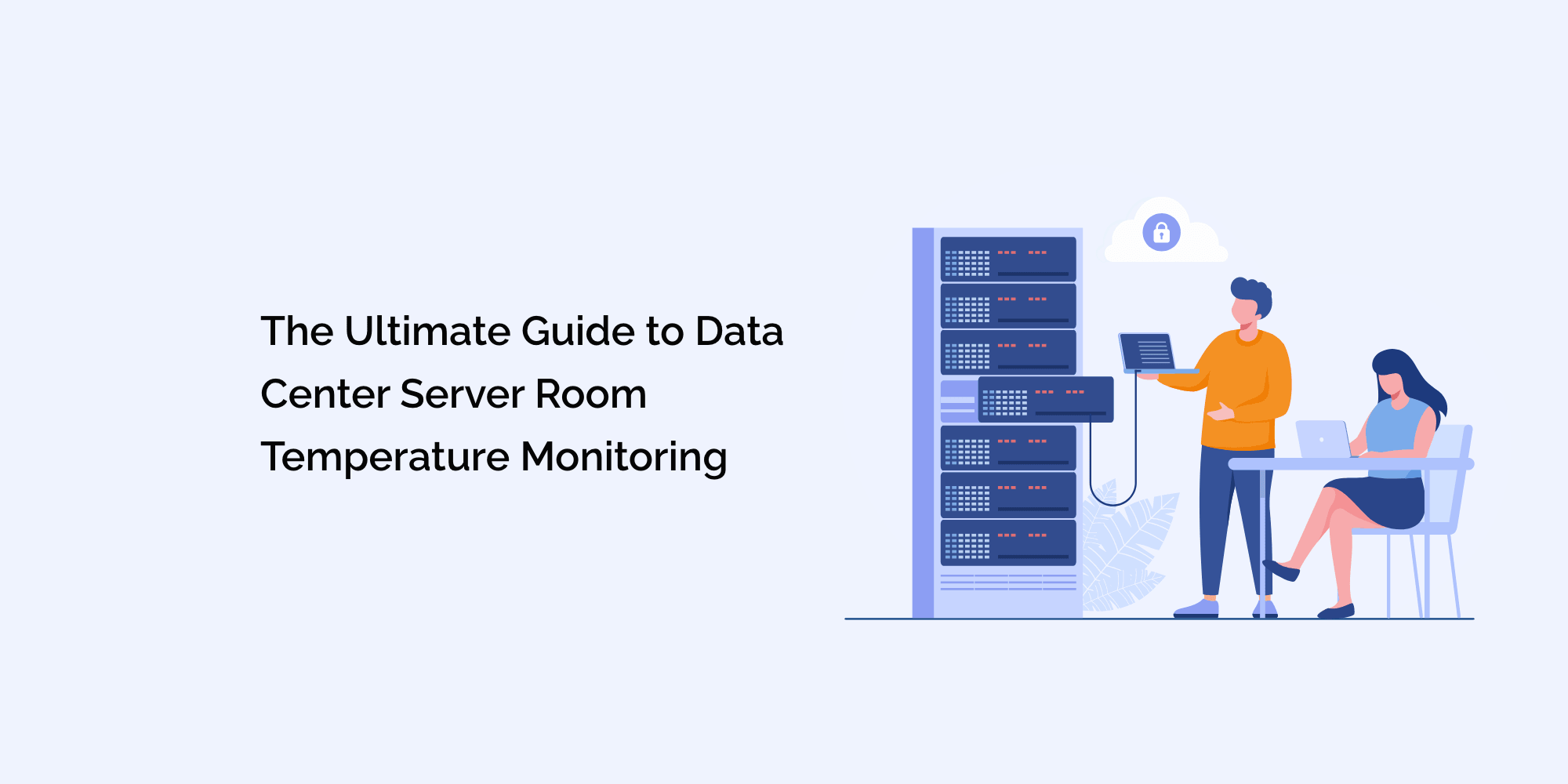In today's data-driven world, data centers form the backbone of various industries, storing, processing, and managing vast amounts of critical information. Maintaining optimal environmental conditions, especially temperature is of utmost importance to ensure the reliable performance and longevity of hardware components within data centers. Temperature monitoring is vital in data center operations, helping administrators proactively detect temperature fluctuations, prevent overheating, and optimize cooling efficiency. In this comprehensive guide, we will delve into the significance of data center server room temperature monitoring, its benefits, best practices, and the different tools and methods available to ensure data centers operate at peak performance.
The Importance of Data Center Server Room Temperature Monitoring:
Data center server room temperature monitoring is a critical aspect of data center management for several reasons:
-
Hardware Reliability: Temperature monitoring ensures that hardware components, such as CPUs, hard drives, and memory modules, operate within their optimal temperature range. Maintaining this range extends the lifespan of the components and reduces the risk of hardware failures.
-
Energy Efficiency: Monitoring allows administrators to fine-tune cooling systems, optimizing energy consumption and reducing operational costs.
-
Proactive Issue Detection: Real-time temperature monitoring enables early detection of temperature fluctuations, allowing administrators to address potential issues before they escalate into critical problems.
-
Data Protection: A well-monitored temperature environment safeguards critical data from potential damage caused by temperature-related hardware failures.
- Preventing Thermal Throttling: Monitoring prevents thermal throttling, where servers reduce performance to avoid overheating, ensuring continuous and uninterrupted operations.
Benefits of Data Center Server Room Temperature Monitoring:
Efficient temperature monitoring offers numerous benefits for data center operations:
-
Improved Hardware Performance: Optimal temperature conditions ensure that hardware components perform at their best, maximizing data center performance.
-
Reduced Downtime: Proactive temperature monitoring minimizes the risk of temperature-related failures, leading to reduced downtime and improved service availability.
-
Predictive Maintenance: Temperature data can be used for predictive maintenance, enabling administrators to schedule proactive cooling system upkeep.
-
Energy Savings: Data-driven cooling strategies optimize energy consumption, leading to cost savings and environmental sustainability.
- Enhanced Hardware Lifespan: Maintaining consistent temperatures within the optimal range extends the lifespan of hardware components, reducing the need for frequent replacements.
Best Practices for Data Center Server Room Temperature Monitoring:
To ensure efficient data center server room temperature monitoring, follow these best practices:
-
Choose the Right Sensors: Select temperature sensors that best suit your data center's specific needs, considering factors such as accuracy, compatibility, and placement flexibility.
-
Implement Redundant Monitoring: Implement redundant temperature monitoring systems to ensure continuous monitoring, even during system failures or outages.
-
Regular Calibration and Maintenance: Periodically calibrate temperature sensors to ensure accuracy and reliability. Regular maintenance ensures optimal sensor performance.
-
Remote Monitoring and Alerts: Utilize temperature sensors with remote access and alert capabilities for immediate response to temperature fluctuations.
-
Analyze Temperature Trends: Regularly analyze temperature data to identify trends and make informed decisions about cooling strategies.
-
Disaster Preparedness: Develop a comprehensive disaster preparedness plan that includes protocols for temperature-related emergencies.
-
Integration with Monitoring Platforms: Integrate temperature monitoring systems with existing infrastructure management platforms for centralized and streamlined data analysis.
- Staff Training: Educate data center staff on temperature monitoring procedures and the importance of cooling efficiency.
Data Center Temperature Monitoring Tools and Methods:
Several tools and methods are available for data center server room temperature monitoring:
-
Temperature Sensors: Deploy temperature sensors strategically throughout the data center to monitor temperature variations effectively.
-
Wireless Temperature Monitoring: Wireless temperature monitoring offers flexibility and ease of installation, making it suitable for retrofitting existing data center infrastructures.
-
Data Center Infrastructure Management (DCIM) Software: DCIM software integrates temperature monitoring data with other environmental and operational data, providing a comprehensive overview of data center performance.
-
Internet of Things (IoT) Enabled Sensors: IoT-enabled sensors can transmit temperature data to a central monitoring system, allowing real-time access to data from anywhere.
- Artificial Intelligence (AI) and Machine Learning (ML): AI and ML technologies can analyze temperature data and predict potential temperature-related issues, enabling proactive maintenance.
Remote Temperature Monitoring Solutions:
Remote temperature monitoring solutions offer enhanced monitoring capabilities and real-time access to temperature data, even from off-site locations. These solutions often include wireless sensors, cloud-based data storage, and mobile applications for remote access and alerts.
Conclusion:
Data center server room temperature monitoring is a crucial aspect of maintaining optimal data center performance, hardware reliability, and energy efficiency. Efficient monitoring helps prevent overheating, reduce downtime, and safeguard critical data. By implementing best practices for temperature monitoring, choosing the right sensors and tools, and integrating with monitoring platforms, data center administrators can optimize cooling efficiency, extend hardware lifespan, and ensure seamless operations in the digital era.
Incorporating modern technologies like IoT, AI, and ML further enhances the capabilities of temperature monitoring, allowing for predictive maintenance and data-driven decision-making. With a comprehensive approach to temperature monitoring, data centers can confidently embrace the future of data-driven operations and maintain a competitive edge in the ever-evolving technological landscape.








